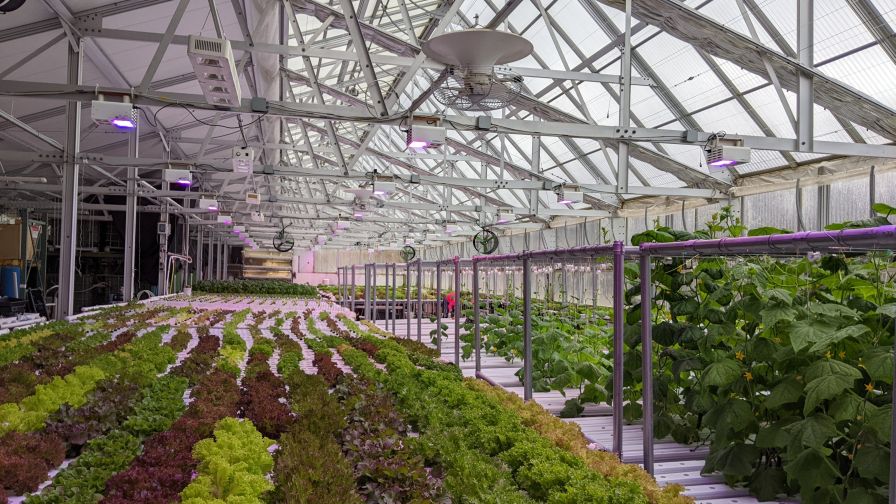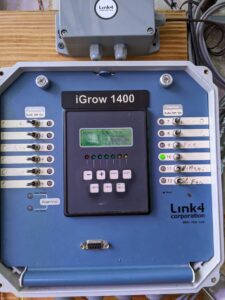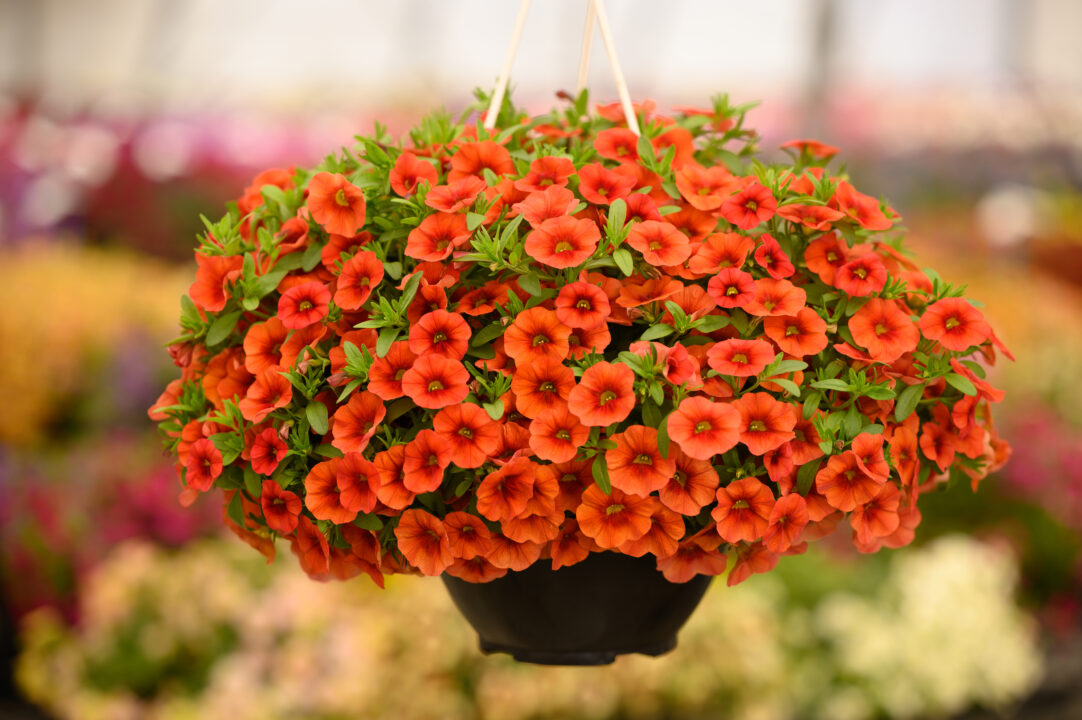Strategies for Successful Greenhouse Maintenance Planning

Finn & Roots is an aquaponic greenhouse in Vermont that grows vegetables, herbs, and tomatoes. Photos: Gretchen Schimelpfenig
Greenhouses for production and research must be well-maintained to meet targets for profitability and support plant growth and development. Regardless of the sophistication of technology or age of a facility, a maintenance plan executed properly provides energy savings and other business benefits like improved productivity, safety, and labor costs.
Plan for maintenance proactively to protect technology investments and ensure crop productivity. Operations and maintenance (O&M) plans preserve the mission-critical equipment that is depended upon for year-round operation by tracking these systems and recommending activities to prolong component life and protect capital investments. Equipment in greenhouses is expected to operate in extreme and dynamic conditions. Coverings and glazing are subjected to intense sunlight as well as whatever weather local climates have to offer, like wind, rain, snow, and hail. The hot and humid environments inside greenhouses corrode metal, foul evaporative cooling pads, and require HVAC systems to run year-round to maintain proper temperature and humidity setpoints. As these systems keep plants alive, emergency shutdowns from component failures are not just inconvenient, they can be catastrophic for horticultural production and research activities.
As an example, the state of Vermont is home to more than 500 nurseries and greenhouses that must handle muggy summers and freezing winters if they are to operate year-round. The state is getting warmer and wetter due to climate change, and this means facilities and the environmental control systems within them must contend with bigger temperature and humidity swings. The importance of maintaining building systems is mission-critical.

Finn & Roots uses an integrated automation system that controls and monitors vents, fans, supplemental lighting, and curtain equipment.
Five Types of Maintenance
Maintenance planning for specialized buildings like greenhouses can address five major categories:
- Facility Integrity: structures, coverings, vents
- Safety Systems: fire suppression systems, emergency alarms
- Environmental Building Systems: lighting, HVAC, curtain, and refrigeration systems
- Utility Services and Reliability Systems: energy supply, backup power, water, wastewater
- Control Systems: monitoring and automation systems
To understand how growers prioritize these categories of maintenance activities, learn from a commercial greenhouse grower in Vermont.
A Self-Sufficient Spirit
Around 200 commercial farms in Vermont cultivate vegetables, herbs, and tomatoes in greenhouses. Finn & Roots is the only aquaponic greenhouse in the state. Within the 6,000-square-foot facility affectionately called the ‘Eco-Ark’ built in 2015, artisan lettuces, basil, cucumbers, and tomatoes are produced year-round for gourmet grocery stores. The supplemental lighting systems, curtain fabric and components, and HVAC systems like the wood-fired boiler and propane heater in use today are original.
For Holly Counter Beaver, the facility owner, this means greenhouse maintenance is crucial to extend the life of the equipment to maximize their value and avoid capital costs. As an independent small business, this also means most maintenance activities are her responsibility.
“Do your best. For example, with glazing, at least clean what you can reach. Dirty windows block light,” Beaver says.
It is imperative for aquaponic facilities like Finn & Roots to keep fish happy while also providing an optimal nutrient mix for a variety of crops like herbs, leafy greens, and cucumbers. This requires a delicate balance of water quality and bio-waste handling. Source water from the on-site well is tested daily to verify pH is within the 6.4-7 range for tilapia, as pH can drift as water temperatures change. Wastewater treatment components like bioreactors and clean water storage infrastructure are inspected daily and irrigation systems are inspected, cleaned, and repaired on a routine basis.
Finn & Roots uses an integrated automation system that controls and monitors vents, fans, supplemental lighting, and curtain equipment. The information provided by the headend controller reports actual greenhouse conditions like vapor pressure deficit (VPD), light intensity from sunlight, and total light received at the canopy. To ensure equipment responds as programmed, automation and electrical components are evaluated yearly, and repaired or replaced as needed.
“My most important maintenance activity is whatever it takes to meet my VPD target,” Beaver says. “It is critical for maintaining crop productivity and avoiding condensation on the greenhouse structure.”
Maintain Smarter, Not Harder
To step up your greenhouse maintenance game, try these low-cost strategies for keeping facilities running smoothly and efficiently:
- Walk through greenhouses daily to make observations that complement information from controls and automation systems collecting data from sensors.
- Check the accuracy of thermostats and humidistats regularly. Calibrating the temperature and humidity sensors can improve conditions for crops and provide a quick energy savings payback.
- Perform preventative maintenance and use start-up checklists routinely to keep facilities safe and energy-efficient.
- When performing maintenance on one system, consider working on another system concurrently. For example, maintain louvers when pads are being cleaned.
- Recommission your systems to validate their performance and observe how the equipment responds to various failure conditions.
- Establish an O&M plan and protocols for maintenance activities in-house or with external partners.









